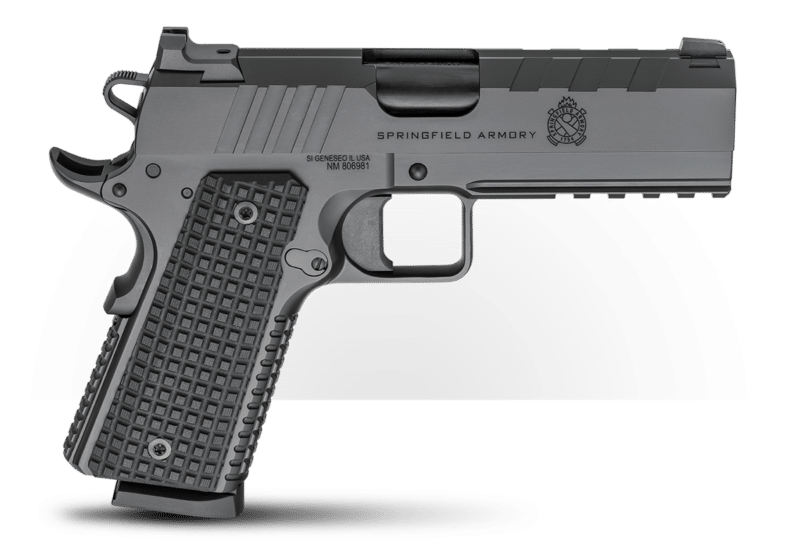Taking the Pig for a Walk: History of the M60
September 14th, 2021
8 minute read
I was six feet tall and 163 lbs. without a gram of extraneous body fat. Though I didn’t enjoy it, I did a weekly 10k run with my mates in boots with a rucksack and M16. I was in the best physical condition of my life and believed myself to be both bulletproof and immortal. Then I met the Pig.
A proper 15-mile forced march was about the hardest thing I have ever done. On this particularly fateful day, I don’t recall whose dog I had inadvertently kicked to deserve what happened to me. This was, however, the day I got tagged to lug the Pig.
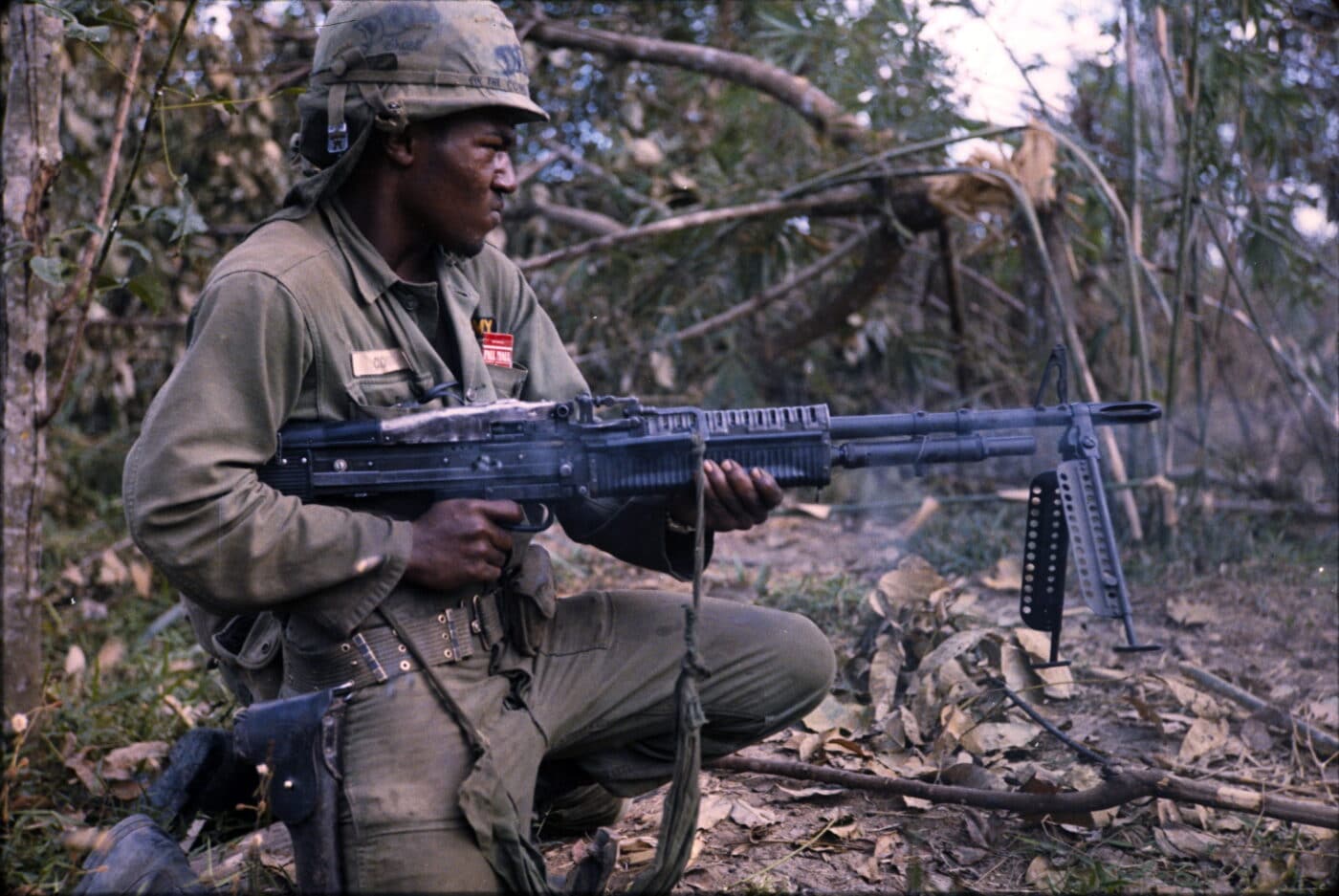
The “Pig” was the M60 belt-fed General Purpose Machine Gun (GPMG). Back in my day, we used M60’s as SAWs (Squad Automatic Weapons). Nowadays, our 5.56mm SAWs are relatively lightweight, portable and mean. By contrast, the Pig weighed 23 lbs. empty and fired a 7.62x51mm round the size of my little finger. The Pig would cut through walls, chew through ceilings, ventilate cars and reach out to truly serious ranges. It was, however, indeed still a pig. At the end of that horrible road march, I thought I’d died.
Origin Story
The M60 GPMG wanted so badly to be awesome. Rising from the ashes of World War II, the M60 reflected the U.S. Army’s effort at developing a truly state-of-the-art light machine gun. We fought the Second World War with the Browning M1919A4. This beast ran like the Energizer bunny, but it weighed 31 lbs. and was a veritable mass of sharp corners. The M1919A4 was also designed to be fired off of a separate M2 tripod, an awkward piece of kit that itself weighed another 16 pounds. The subsequent M1919A6 tried to morph the gun into something more portable, but it was yet a pound heavier. We could do better.
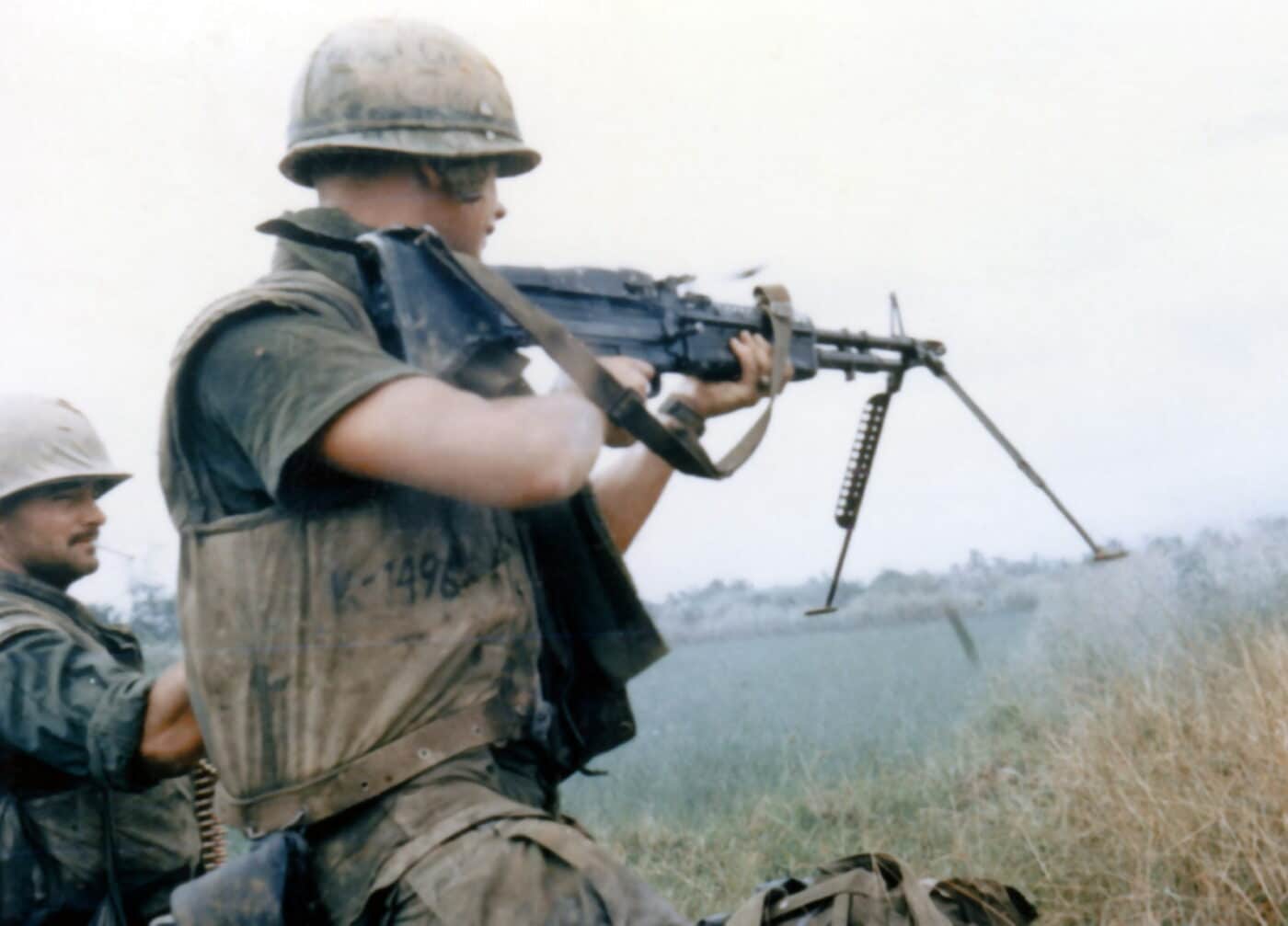
The M60 began life as the experimental T44. In what has got to be the coolest job in the history of jobs, American firearms engineers took the belt-fed mechanism from a captured German MG42 and grafted it onto the action of an FG42 paratroop rifle. The resulting frankengun served as the basis for the M60 action.
The M60 orbited around a stamped steel receiver for both economy and weight management. The Germans had shown the world with their MG42 that you could indeed stamp out a GPMG that was rugged enough to thrive on the modern battlefield. Though M60 receivers were ultimately found to stretch a bit, this part of the design performed fairly well.
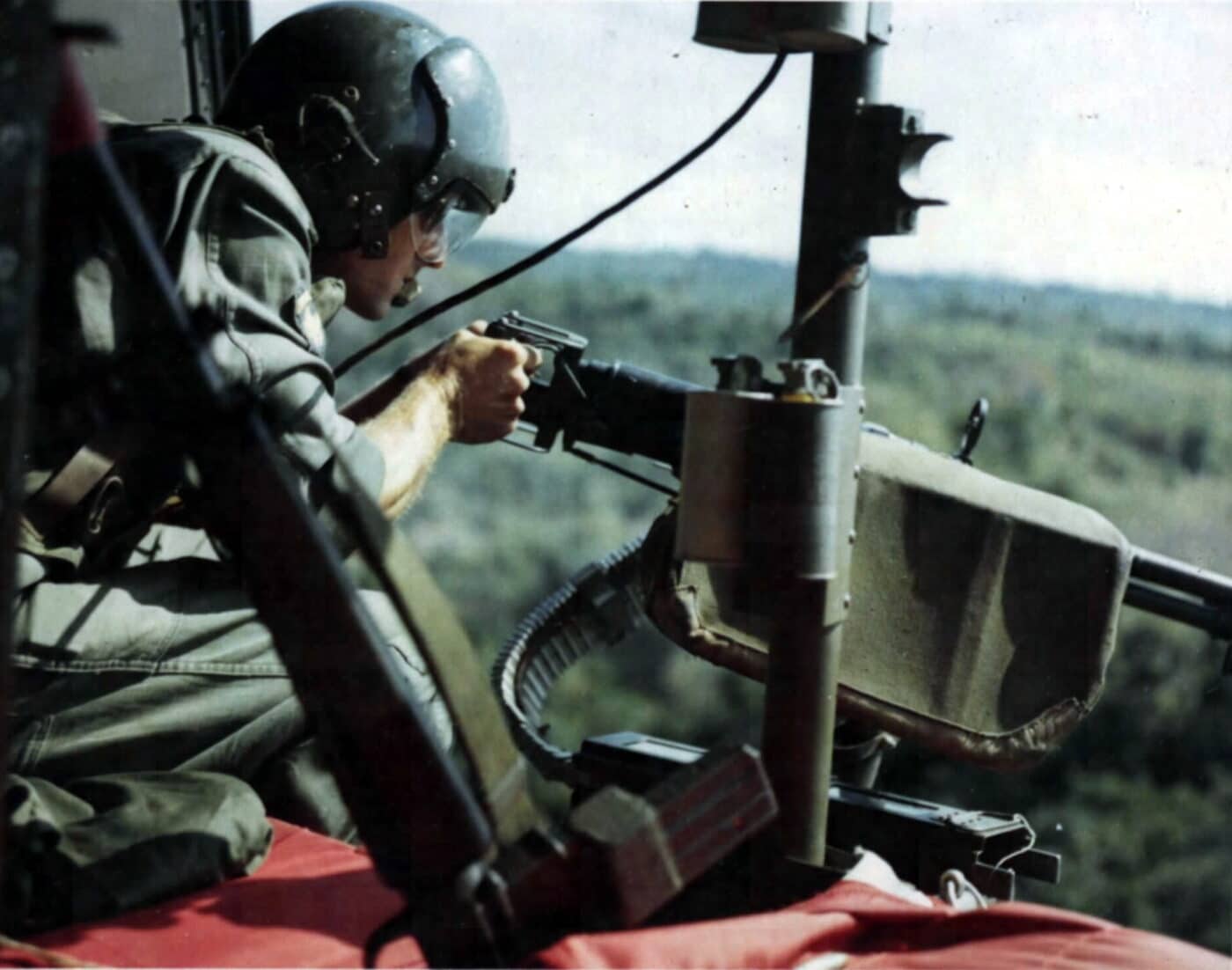
The M60 featured a gas piston-driven action that fed ammunition in M13 disintegrating links solely from the left. The gun fired from the open bolt and was exceptionally simple to operate. Lock the bolt to the rear, put the gun on safe, open the top cover, and place the ammunition belt in the feedway link side up or “brass to the grass.” Close the top cover, point the gun at something you dislike, flick the safety off, and squeeze. Repeat as necessary. As seems always to be the case, however, the devil was in the details.
The M60 was an air-cooled design intended for sustained fire applications. Running lots of belt-fed rounds through a machinegun creates astronomical amounts of extraneous heat. Getting rid of all that thermal energy is the Achilles heel of any sustained fire weapon system. The generally accepted solution on a gun like the M60 is a quick change barrel system.
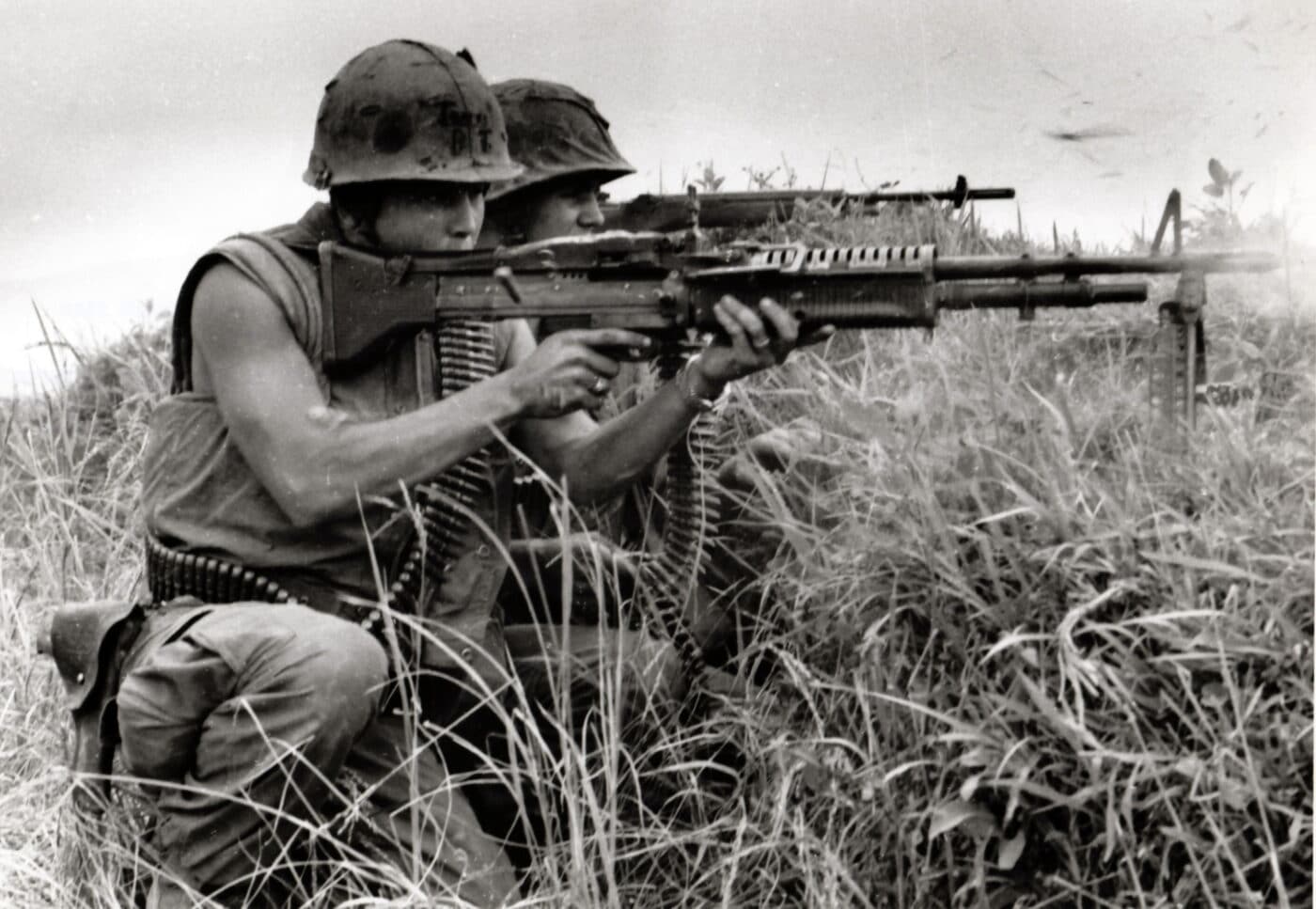
You can cut spirals or flutes into a barrel to increase its surface area and subsequently its capacity to dissipate heat. However, if you want this thing to shoot for a while you need mass. Making your barrels heavy is one of the reasons the Pig and I got along so poorly that torrid afternoon at Fort Benning. Certain aspects of the M60’s design were just fatally flawed.
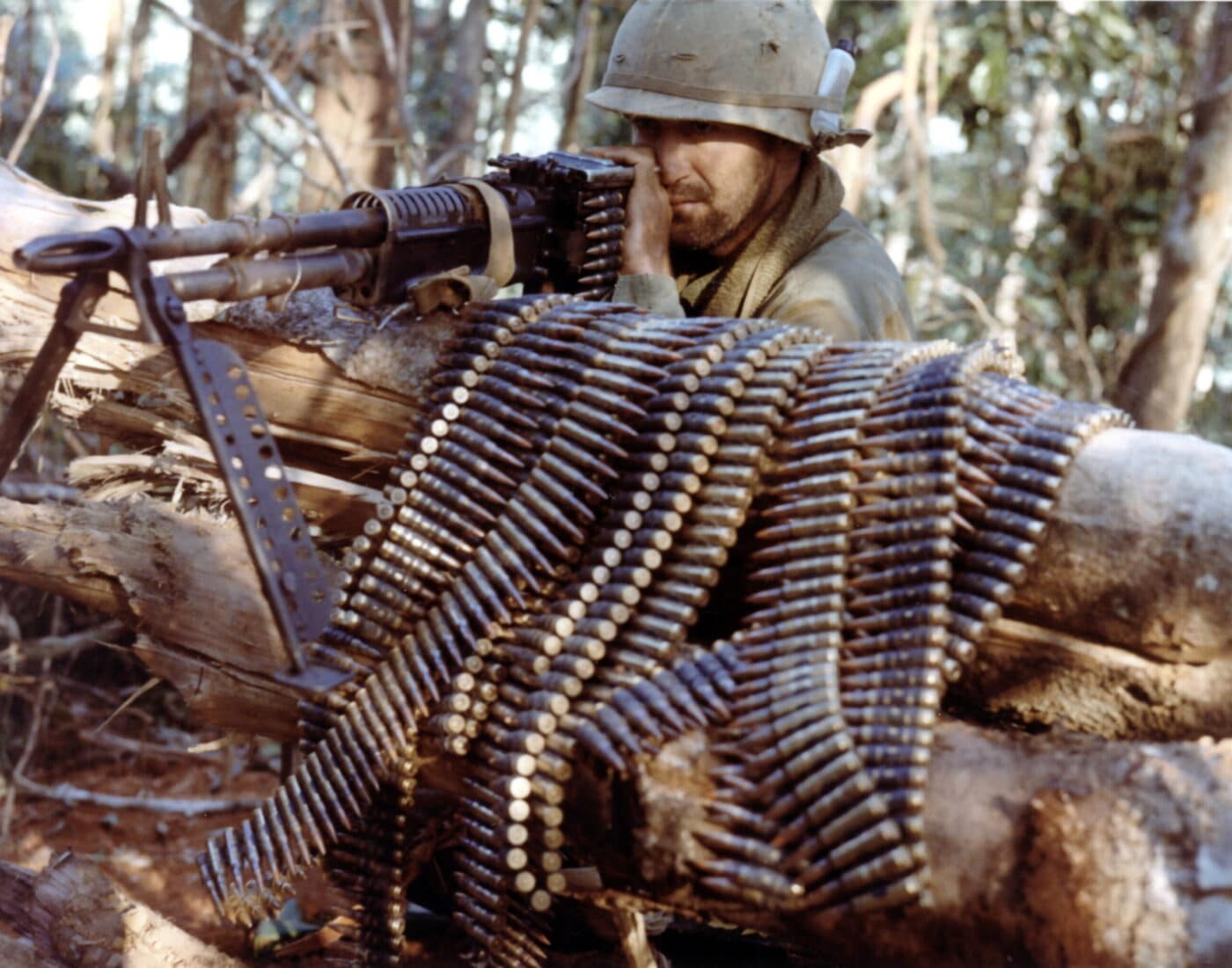
The bipod on the M60 was located at the far end of the gun. This location optimized stability and control. However, in the case of the Pig, this meant that every spare barrel had its own dedicated bipod. For the sorts of guys who might break the handles off of their toothbrushes to help conserve weight on a long patrol, any extraneous mass was the unforgiveable sin.
Additionally, certain components of the M60 gas system had an annoying tendency to come apart at high round counts. As a result, the gas cylinders on our guns were always held together with safety wire. In practice that was not a particularly onerous problem, but it didn’t inspire confidence.
Swapping barrels on the Pig was indeed fast and intuitive. Lock the bolt back, throw the barrel release lever, snatch out the barrel using the handy but heavy carrying handle, and lock a fresh tube in place. Easy peasy.
Variations
The M60 was intended from the outset to be everything for everybody. Uncle Sam wanted one gun that could serve in a variety of roles. In the final analysis, there were only three versions that saw widespread service back in my day.
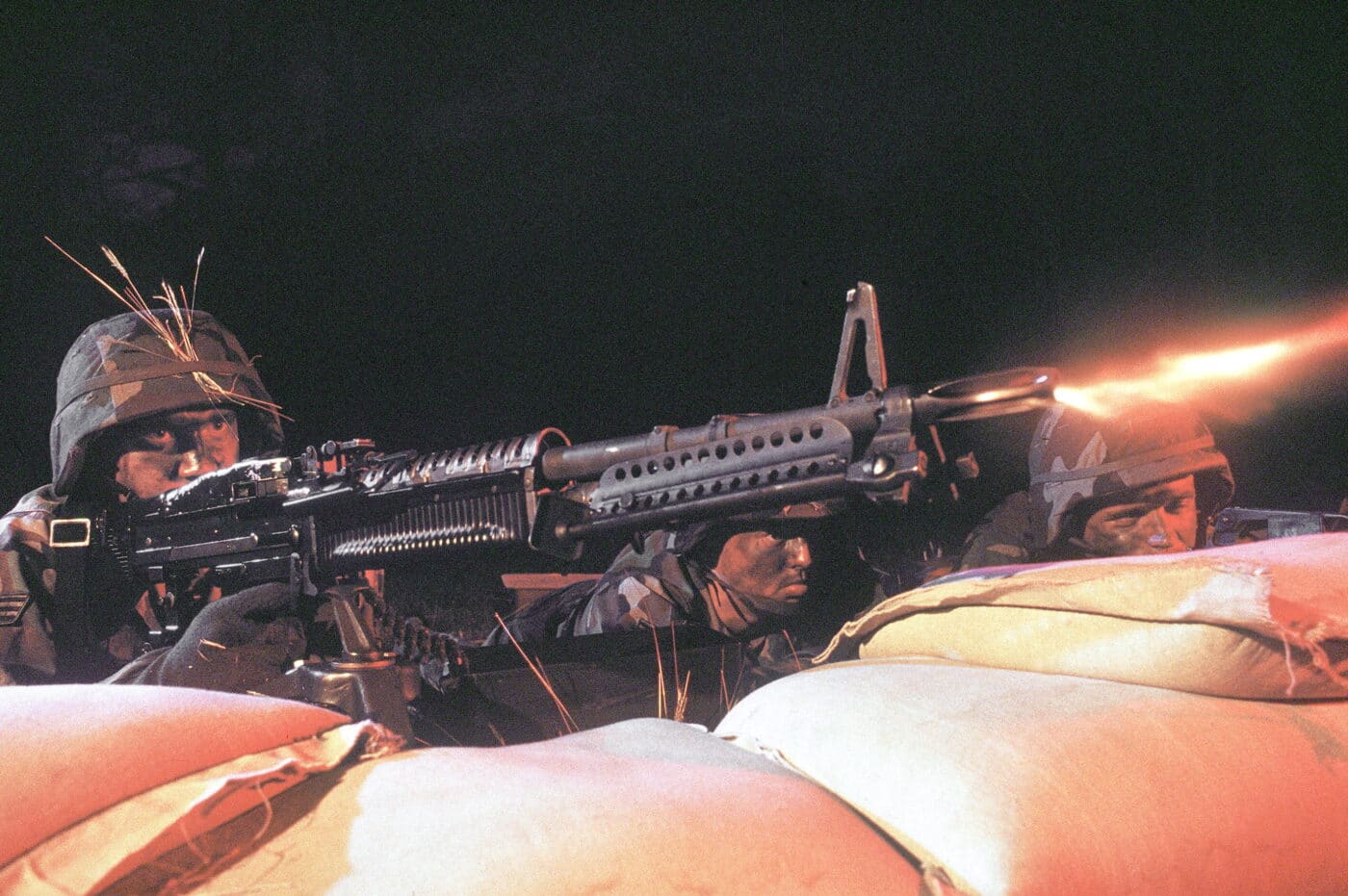
The standard ground gun featured a rubber-coated steel handguard and buttstock with a folding shoulder rest. This weapon served in most conventional roles to include vehicle mounts. In Vietnam, particularly early in the war, helicopter door gunners frequently hung a standard M60 from a bungee cord and used it for suppressive fire. Innovative gunners sometimes chopped the barrels short or affixed a spare pistol grip to the forearm with pipe clamps. It was a common practice to wire a C-ration can to the left aspect of the feed tray to enhance feeding.
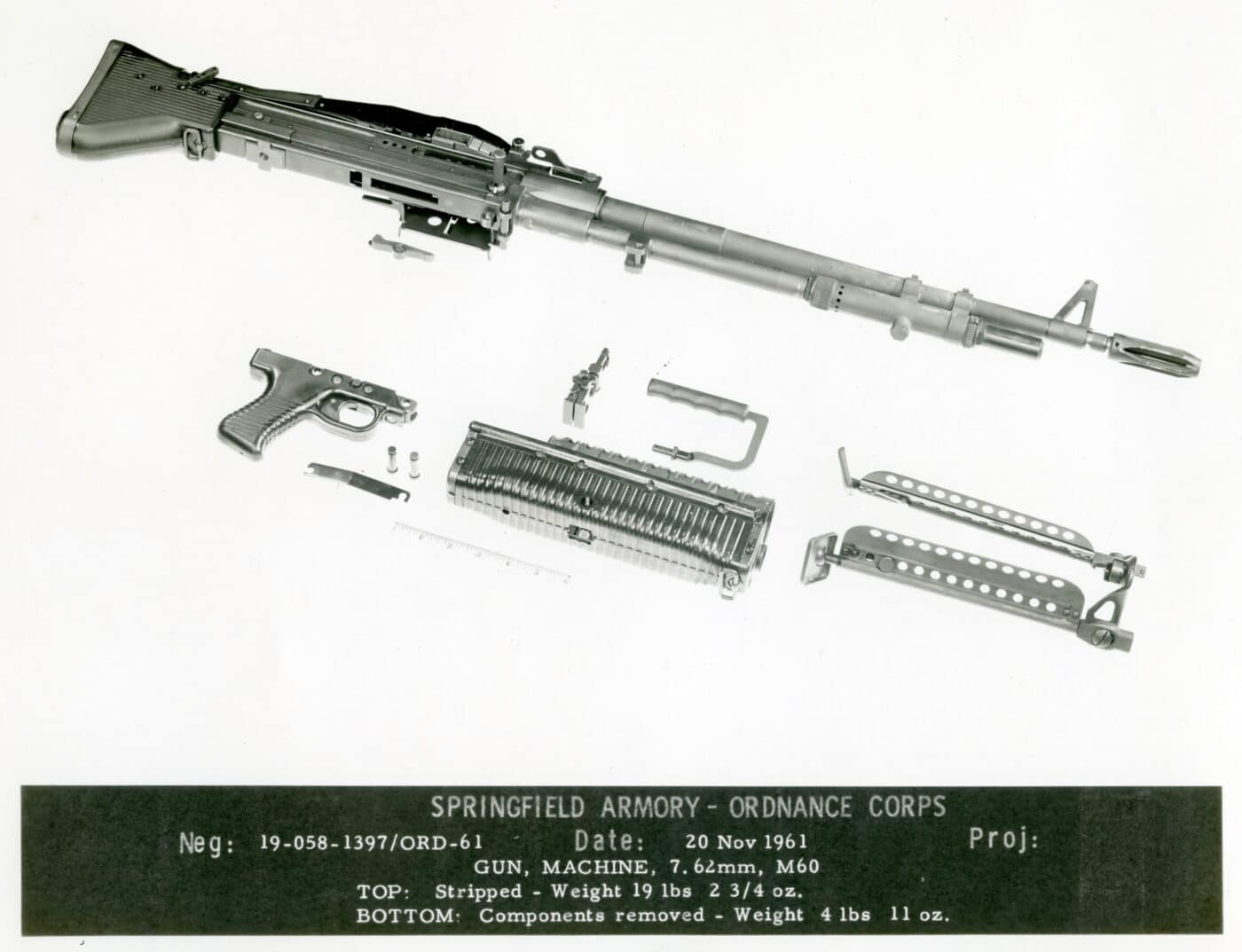
The M60C was used in fixed mounts aboard helicopter gunships, most typically in dual fixtures on each side of the aircraft. The C-model was hydraulically charged and electrically fired via solenoid. The C-model guns used the same basic chassis as the ground guns. However, their barrels lacked bipods, front sights, and carrying handles.
The M60D was the standardized pintle-mounted aerial version of the weapon. The D-model dispensed with the forearm and included a spade grip with twin ring triggers in lieu of the buttstock assembly. The M60D included a folding ring sight as well. The barrels on our D-models still carried their own bipods so you could use the gun on the ground in a crisis.
Reliability
I did not have a homogeneously positive experience with the M60. Most of the guns I was issued seemed fairly finicky. We trained to fire five to eight-round bursts and remain ever mindful of barrel heat. I recall having to fiddle with the guns more than I should have to keep them running, particularly in an austere environment.
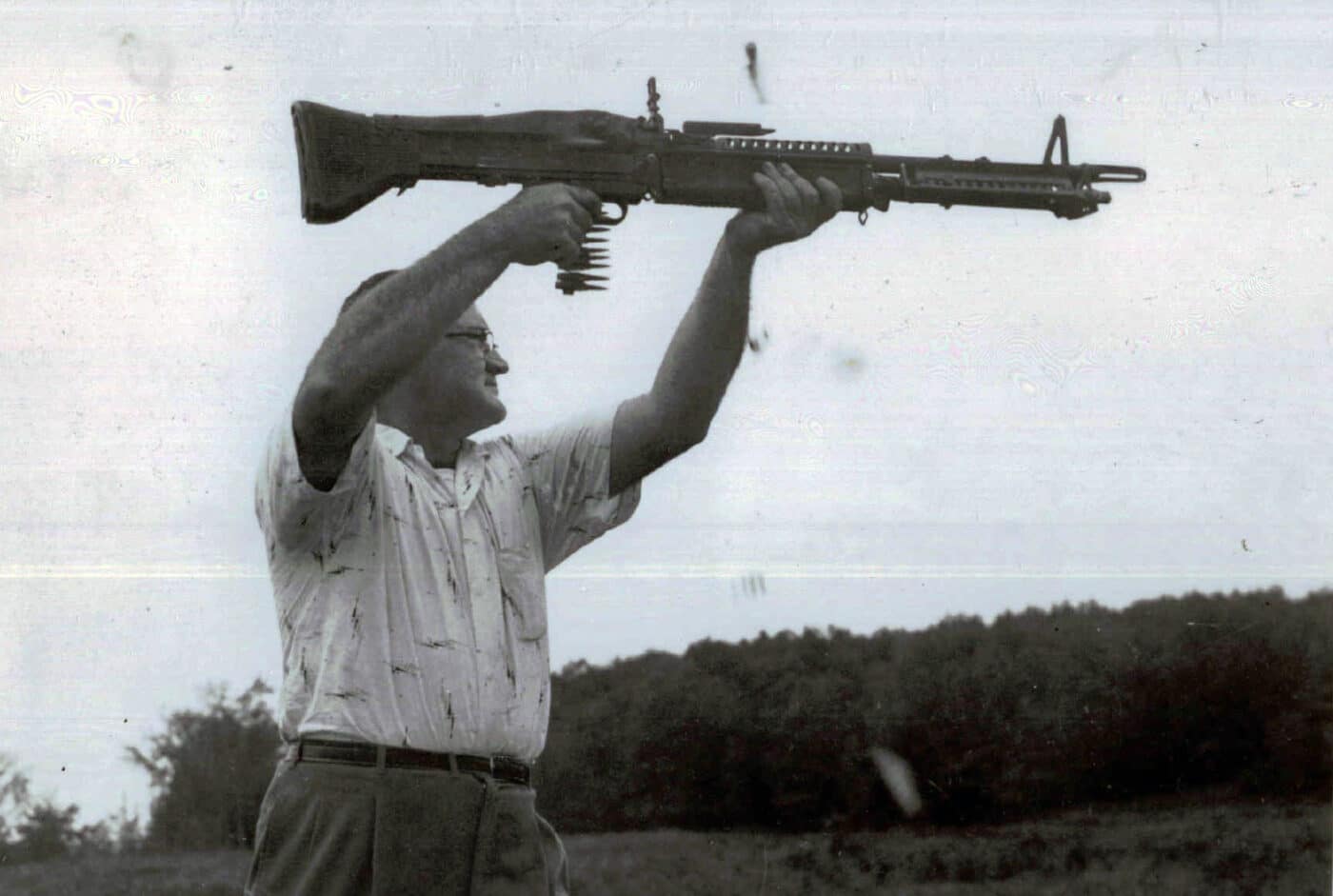
I was once signed for twenty-four D-model M60s to be used as door guns on my tactical aircraft. Despite being spotlessly maintained and perfectly lubricated there never seemed to be more than about six that really ran well. Failures in training tended to diminish confidence in the weapons. Given that the mission was to provide suppressive fire going into and out of hostile landing zones that always seemed a wee bit disturbing.
Practical Tactical
When the Pig ran, it ran well. The sedate 550-rpm rate of fire encouraged ammunition efficiency, and the heavy .30-caliber chambering carried plenty of downrange thump. Running the gun was both fun and exhilarating. Humping it, however, particularly for a skinny guy like me, not so much.
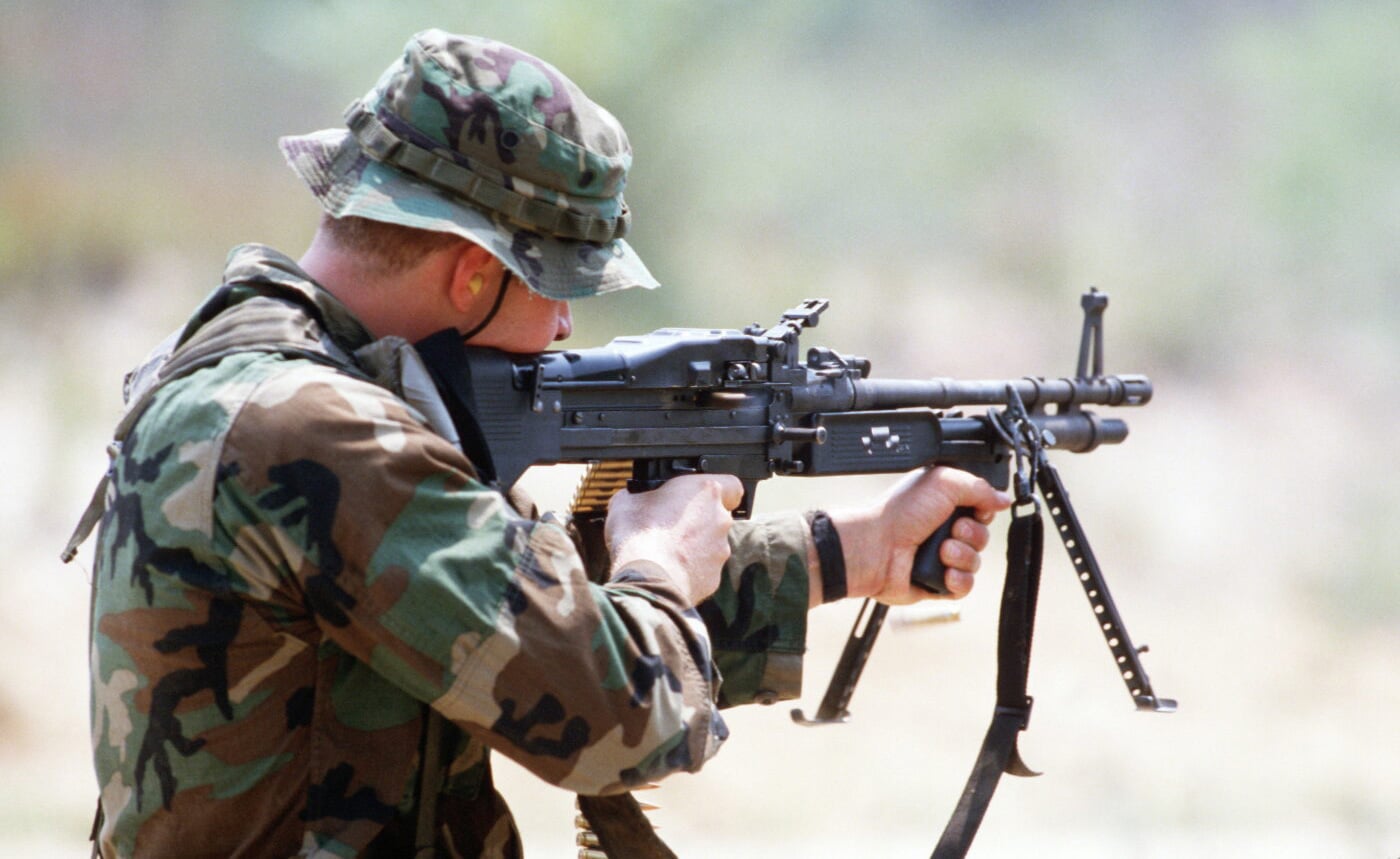
Running a belt-fed machinegun out of a moving helicopter is an incomparable rush. It also embodies a fair amount of unexpected physics. When the aircraft is in forward flight and the guns fired out the sides each screaming bullet becomes its own little flying machine.
The 22” barrel on the M60 is rifled one turn in twelve inches. The bullet leaves the gun’s barrel at around 2,800 fps. That means it has a rotational velocity of 2,800 revolutions per second or about 168,000 rpm. The bullet turns clockwise as viewed from the firer. When fired in forward flight out the right side of the aircraft the airflow across the bullet creates a low pressure area on the top that actually draws the projectile upward. Smarter folks than I call this the Magnus Effect. On the left side of the aircraft this low pressure area is formed underneath the bullet and pulls it down.
The end result is that to hit a target on the right the gunner aims intentionally beneath it and lets the bullets fly up to impact. The opposite is true on the left with the bullets plunging precipitously toward the ground. The practical effect when doing this for real firing tracers is frankly surreal.
Denouement
The M60 will forever be associated with Sylvester Stallone and John Rambo. The 1982 action movie First Blood established its own film genre. A fun fact is that Stallone co-wrote the screenplays for First Blood as well as the next four sequels.
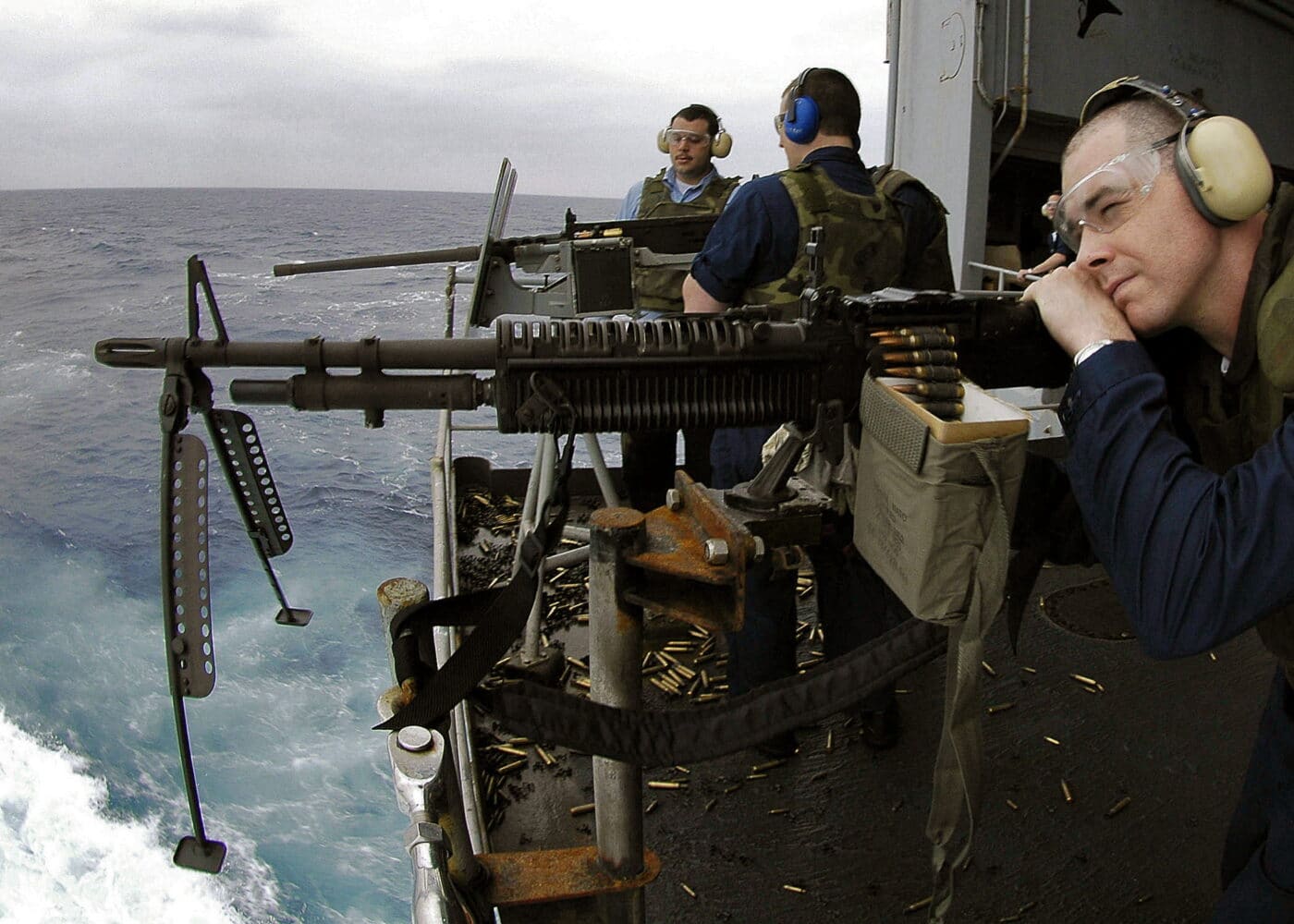
In the first film, Stallone’s put-upon Vietnam-era Special Forces veteran character eventually takes up an M60 and uses it to shoot the bejeebers out of the small town of Hope, Washington. Along the way, Rambo even runs his M60 one-handed, albeit on a sling. Just punch “First Blood M60” into YouTube if you haven’t seen the juicy bits. However, should this be the case I sure wouldn’t admit that to any of your guy friends.
For the most part, the M60 has been supplanted in U.S. military service by the M240-series of belt-fed guns. Upgraded versions like the M60E6 still soldier on in certain select units, however. Despite its warts, the Pig yet remains one of the coolest looking automatic weapons ever contrived.
Editor’s Note: Please be sure to check out The Armory Life Forum, where you can comment about our daily articles, as well as just talk guns and gear. Click the “Go To Forum Thread” link below to jump in and discuss this article and much more!
Join the Discussion
Continue Reading
Did you enjoy this article?

 450
450






